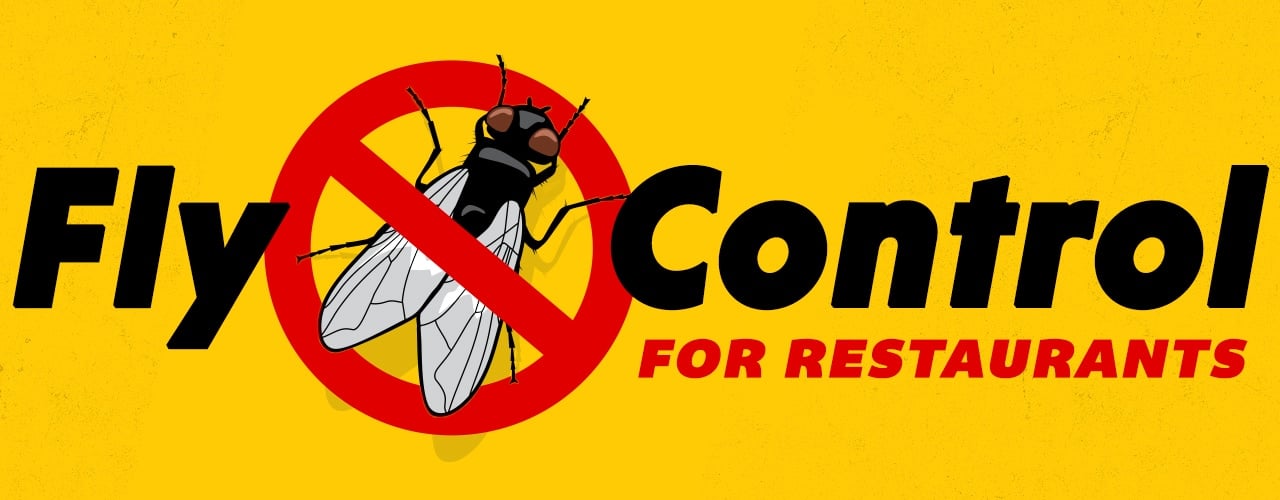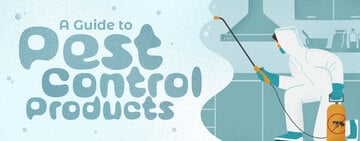The coronavirus pandemic broadened the public’s awareness about how contaminants spread, raising expectations of what constitutes a clean environment. Implementing advanced cleaning measures may help you successfully reopen your business. We break down the latest cleaning industry trends so you can effectively and efficiently sanitize your restaurant, hotel, or office. Foggers Air Purifiers Air Filters UVC Lights Electrostatic Sprayers Aerosolized Chemical Best Practices 1. Disinfectant Fogger A disinfectant fogger offers maximum coverage by evenly dispersing cleaning agents as fine water droplets. They are a low-labor tool that kills germs and bacteria. Whether you operate a restaurant, hotel, or hospital, disinfectant foggers save time and create an uncontaminated environment. How Do Disinfectant Foggers Work? A disinfectant fogger is a handheld device that sprays disinfecting solutions so you can easily sanitize the air and surfaces of your business. Foggers have compact, lightweight designs and tanks that hold the sanitizing solution of your choice. Most units are cordless and come with charging stations. Your janitorial staff will typically transport the fogger using a cross-body strap, freeing their hands to aim the unit's nozzle towards surface areas. The fogger will have a lever or button that controls the amount of fog released. Individual fogger models vary depending on the type of sanitizing agent they release. Types of Foggers There are different types of foggers that use distinct solutions and compounds to remove pathogens. We explain what you need to know about each type of fogger below. Chemical Foggers Chemical foggers release a fine mist of disinfectant solution, saturating the air and all the surfaces in the room. This process takes between 30-60 minutes depending on the space. You must wait another 60 minutes for the disinfectant mist to dissipate before reentering the room. Chemical Fogger Pros Relatively Fast Offers the widest range of solutions Chemical Fogger Cons Harmful to breathe Mist lingers longer than other fogging solutions Maintenance and upgrades are often expensive Requires licensing, permits, and various additional documents to operate (i.e. zoning permits...) Chlorine Dioxide (ClO2) Foggers A chlorine dioxide fogger (ClO2 fogger) uses sodium chlorite and chlorine gas as its cleaning agent. Because ClO2 is an unstable compound, you will have to generate it on-site by oxidizing sodium chlorite with chlorine. You must turn off your appliances’ pilot lights and disarm fire detectors before using a ClO2 fog. Chlorine dioxide gas breaks down into salts, making it a relatively safe fogging choice for your clientele and employees. ClO2 Fogger Pros Unlike other fogging solutions, ClO2 residue is harmless ClO2 gas completely and evenly distributes throughout any confined space You won’t need to rinse or wipe surfaces after applying ClO2 vapor ClO2 Fogger Cons If working with ClO2 for extended periods or in an unventilated area, a respirator is necessary Requires 70%-90% humidity before use Temperatures must be between 77-86 degrees Fahrenheit Activating chlorine dioxide vapor can take minutes or hours depending on the product Ozone Fogging Ozone foggers pass air through a source of high energy to create ozone gas. The ozone gas acts as the sanitizing agent. Ozone gas is an unstable compound composed of oxygen molecules that have been converted into disassociated oxygen atoms. No federal government agency has approved ozone foggers for use in occupied spaces. Exposure to ozone gas can decrease lung function, cause chest pain, and aggravate asthma. To mitigate this, clear the room with fresh air once the fogging is complete. Ozone fogging is not an advisable method for rooms housing corrodible metals. Ozone Fogger Pros The ozone fogger produces and uses ozone gas for sanitizing, saving you time and money spent restocking sanitizing agents. Comparatively fast (takes between 30-90 minutes) Ozone Fogger Cons Toxic to breathe Damages rubber electrical wire coatings, fabrics/art with ozone sensitive dyes or pigments, and plants Common allergens and particles are not removed by ozone Ozone concentration must exceed public health standards by 5-10 percent before it can kill viruses, mold, and bacteria Are Foggers Safe? The safety associated with using a fogger depends on the solution/substance it diffuses. To safely use a fogger, janitorial staff must wear proper protective equipment. Inhaling a fogging solution can lead to serious side effects. Despite these risks, many are choosing to use foggers, because they effectively destroy airborne pathogens carried by respiratory droplets. Shop All Foggers Back to Top 2. Air Purifiers Air purifiers sanitize the air and remove pollutants, allergens, and airborne diseases. A study by the U.S. Environmental Protection Agency found that indoor air is between two to five times dirtier than outdoor air. Many air purifiers use advanced technology to remove particles as small as 0.1 nm and destroy harmful organic compounds. How Do Air Purifiers Work? Air purifiers, sometimes called air scrubbers, are compact units that emit negative ions, ozone, heat, or UV/UVC light to sanitize the air. Air purifiers require little effort to use, simply turn them on and let their air scrubbing cycle run its course. Most air purifier units are lightweight so you can easily transport them from room to room and store them when they aren't in use. You will need an electrical connection to power your air purifier. Its method of air sanitation will determine what particles the air purifier effectively removes, so check the manufactures notes to see what it emits. Do Air Purifiers Work? Air purifiers sanitize a high percentage of airborne allergens, diseases, and hazardous materials. Air purifiers with HEPA filters, UV light, or heat sanitizing solutions are the most effective in destroying bacteria and viruses. However, air purifiers won’t remove all harmful elements without other coinciding cleaning and sanitizing measures. What Are the Benefits of an Air Purifier? We break down the top benefits of using an air purifier below: Reduce the spread of airborne disease Remove hazardous asbestos particles Relieve asthmatic symptoms Neutralize unpleasant smells Prevent harmful chemicals from circulating How Many Air Purifiers Do I Need? How many air purifiers you need depends on the size of your space. Most air purifiers give their capacity rating in square feet. To determine square feet, multiply your room’s length by its width. While you should check the capacity of your individual air purifier, you can use the following to approximate how many air purifiers your space needs: Small Air Purifiers = cover 200 square feet Medium Air Purifiers = cover 200-400 square feet Large Air Purifiers = cover 400-1,500 square feet How to Find the Best Air Purifiers Use the Association of Home Appliance Manufacturers’ (AHAM) standards to find the best air purifiers. As the developer of air purifier standards in the U.S., AHAM instituted a system called The Clean Air Delivery Rate (CADR). CADR measures the airflow of filtered air, filtration performance, and noise levels. AHAM determines CADR ratings in certified labs and tests units against invariable industry standards. Shop All Air Purifiers Back to Top 3. Air Filter Replacement Most buildings have an HVAC system, and HVAC air filters catch the pollutants, bacteria, and viruses threatening to circulate inside indoor spaces. The HVAC fan pulls air through the filter, which removes pollutants and contaminants from the air. Just like you wouldn't attempt to clean a mirror with a muddied rag, you shouldn't expect a dirty air filter to clean the air. Regularly replacing air filters is one of the simplest but often overlooked ways to maintain a clean and sanitary environment. Because of the cooking fumes, smoke, carbon monoxide, and chemical fumes frequently released, commercial kitchens are vulnerable to indoor air pollution. An air filter helps remove these harmful elements as well as unpleasant odors, dust, and viruses. How Often to Change Air Filter How often you need to change your air filter depends on the type of building you operate. Many commercial HVAC systems have maintenance sensors that tell you when to change their filters. While you should always check with your unit’s manufacture, you can use our guidelines to approximate how often you should change the air filter in your building. Commercial Offices – If you operate a low-pollution, low-traffic commercial office building, you need to change your air filter 3-4 times a year. Restaurants – Most restaurants need to change their air filter every 4-6 weeks. Small Stores/Boutiques – Change the filter in your small storefront at least every 12 weeks. Hotel Rooms – An air filter may not be on your housekeeping checklist, but 2 months is the longest you should wait to change a hotel room filter. What Size Air Filter Do I Need? If you need to change your air filter but can’t find the manufacturer’s notes on which filter to purchase, check your existing filter for sizes and model numbers to ensure compatibility before purchasing a replacement. You can also measure the filter you already have to determine what size you need. Using the wrong air filter size can burn out your HVAC. Gaps in between the filter and your unit allow dust and debris to enter the system. Which Air Filters Are Best For Viruses? To effectively filtrate viruses, an air filter must be able to remove airborne particles as small as 0.1-1 um. While some manufacturers share the specific particle size their filter removes, others will provide their unit’s Clean Air Delivery Rate (CADR), or show that it is a designated High-Efficiency Particulate Air (HEPA) unit. A filter with any of the following designations can effectively remove viruses: An air filter with a high CADR graded for smoke A designated HEPA unit An air filter that filters particles between 0.1-1 um Air Filter vs Air Purifier While both air filters and air purifiers help improve indoor air quality and remove harmful pathogens, they accomplish these goals in different ways. Air filters catch and filter out pollutants and contaminants. Air purifiers use negative ions, ozone, heat, or UV-C light to sanitize the air. Back to Top 4. UVC Lights UVC lights, also known as germicidal lamps, use UVC radiation to disinfect air, water, and nonporous surfaces. People have used UVC radiation to reduce the spread of bacteria since the 1930s. We answer the most common questions about UVC lamps below. What Is UV Light? Ultraviolet (UV) light is a form of electromagnetic radiation. Its wavelength is shorter than visible light and longer than an X-ray. There are three forms of UV light: UVA Light – Found in sunlight, causes skin tans/burns. UVB Light – Also found in sunlight and causes skin tans/burns. However, it’s used medically to treat psoriasis, and it strengthens bones by activating vitamin D formation. UVC Light – The shortest wavelength of UV light, UVC is absorbed by the ozone layer. It can effectively destroy bacteria. If exposed to it, UVC radiation damages the skin and eyes of humans and animals. UVC Lights for Disinfecting When installed properly, UVC light is an effective means of disinfecting surfaces. Since scientists harnessed its power in the 1930s, UVC light has proven to deactivate bacteria and viruses such as tuberculosis and COVID-19. UVC Disinfection Light UVC disinfection lights can sterilize non-porous surfaces, air, and water. We break down UVC disinfection applications below: UVC Surface Disinfection — Exposing surfaces to direct UVC radiation is an effective way to kill bacteria and viruses. You can purchase germicidal lamps, luminaires, and disinfection carts. You should only use UVC tools when people are absent. UVC Air Disinfection — Ceiling-mounted UVC lights rely on mechanical or natural ventilation. When contaminated air passes through a UVC unit, the UVC light disinfects the air. Because they shield their light sources and are high above the room’s occupants, UVC air units can operate while people are present. UVC Water Disinfection — UVC radiation is used to disinfect and purify drinking water, swimming pools, wastewater, and ponds. Does UV Light Kill Coronavirus? UVC light kills the coronavirus when it hits it directly. However, if the coronavirus is embedded into a porous surface or covered in any way (ex. dust, soil, a shadow), UVC light won’t destroy it. Shop All UVC Lights Back to Top 5. Electrostatic Sprayers Electrostatic sprayers are an emerging technology for applying disinfectants and sanitizers. As operators prepare to reopen after the quarantine shutdowns, they need to increase their cleaning measures without decreasing productivity. Electrostatic sprayers address these concerns by offering fast cleaning and full coverage. How Do Electrostatic Sprayers Work? Electrostatic sprayers direct positively charged disinfectants or cleaning solutions towards negatively charged surfaces by adding a positive electrical charge to liquid solutions as they pass through their nozzles. The positive charge evenly disperses and directs the liquid towards negatively charged surfaces. There are also ionization units that preserve a clean environment by continually releasing ionized radicals. Electrostatic Technology Explained Electrostatic technology may sound complex, but it’s as simple as the age-old saying “opposites attract.” Electrostatic sprayers manipulate matter in the same way children make balloons stick to walls. When you rub a balloon against clothing, you add an excessive number of negative charges (electrons) to the surface of the balloon. Subsequently, the wall will have a positive charge and the balloon will have a negative charge, allowing them to stick together. Electrostatic sprayers employ this principle to make positively charged disinfectants cling to negatively charged objects. Electrostatic Sprayer vs Fogger Electrostatic sprayers and foggers both aerosolize chemicals and suspend them in the air, but their methods are unique. Electrostatic sprayers add a positive electrical charge to a cleaning solution so it invades very nook and cranny of a negatively charged room. In contrast, foggers saturate rooms with cleaning agents they've converted into fine water droplets. The substances electrostatic sprayers and foggers release can be dangerous and linger for extended periods of time. Take extreme caution before integrating either of these methods into your advanced cleaning procedures. When Was Electrostatic Technology Invented? While electrostatic sprayers are now becoming a popular commercial cleaning solution, the technology behind them has been around since the 1930s. The auto industry popularized electrostatic spray technology when they realized it helped them access nooks and crannies and quickly paint automobiles. In the 1980s, the agricultural industry used electrostatic technology to cover crops with pesticides. Today, innovators are using it for thorough cleaning. Back to Top 6. Aerosolized Chemical Safety Whether you use a fogger or electrostatic sprayer to apply aerosolized chemicals, you need to follow safety best practices. While you should always check with the manufacturer and adhere to each method’s guidelines, we’ve outlined some basic rules for how to use aerosolized chemicals safely. The only person who should be present is the one applying the aerosolized disinfectant. Professionally train janitorial staff and equip them with PPE before asking them to use aerosolized disinfectants. The treated room should remain vacated until the time indicated by the product label/application device has elapsed. Lingering chemical residue can pose health risks, so make sure you rinse/wipe residue after the required time has passed. If you operate a foodservice business, only use products approved for food contact surfaces in the rooms where you store or prepare food. Back to Top The COVID-19 pandemic forever changed consumers’ cleanliness expectations. Integrating the latest cleaning industry trends and practices into your regimen allows you to meet public health standards and prevents the spread of bacteria and viruses.












